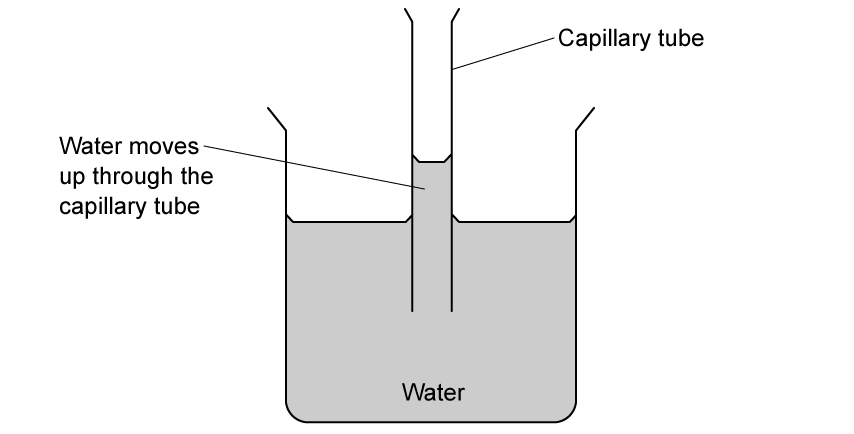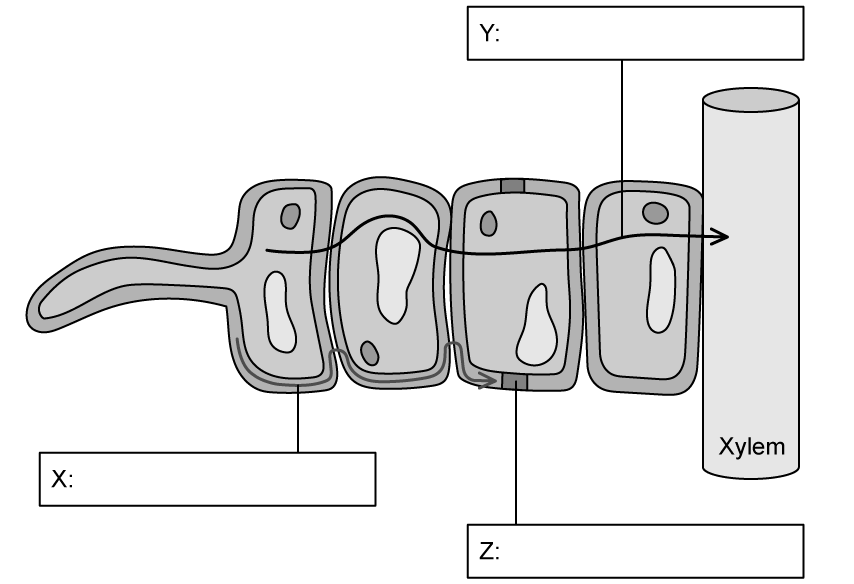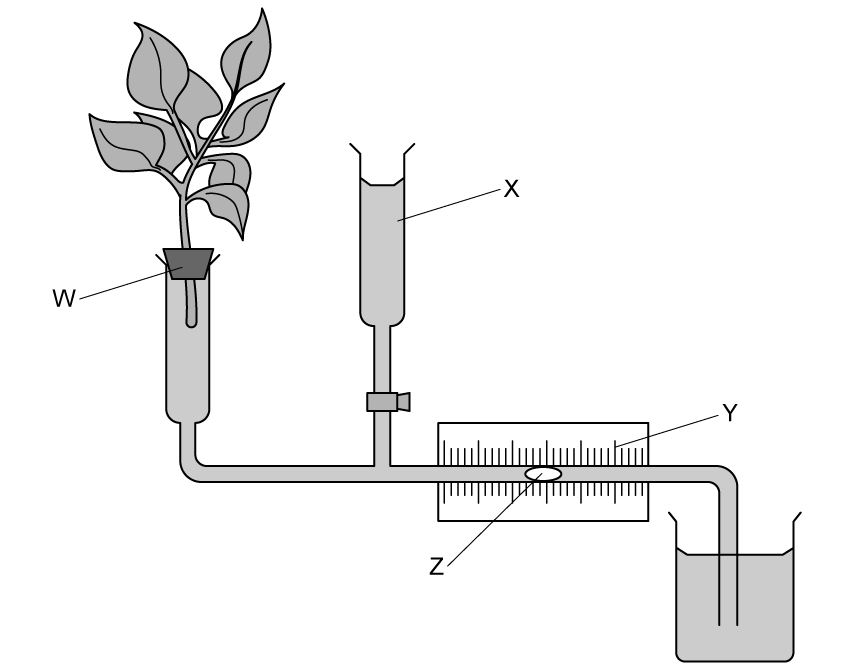a)
The image shows the cross section of a leaf.
[1 mark]
Assess your score
View Answer
b)
Draw three lines to correctly identify the method of particle movement shown in the diagram from part a) .
[3 marks]
Assess your score
View Answer
c)
i)
Identify the letters from the diagram in part a) that represents the xylem.
[1 mark]
ii)
Describe one adaptation of the xylem which makes it suitable for its function.
[1 mark]
Assess your score
View Answer
d)
The diagram below represents a plant organ.
State the name of this organ.
[1 mark]
Assess your score
View Answer
Next Question
a)
The transpiration stream relies on cohesion to maintain a continuous column of water in the xylem.
Define the meaning of the term 'cohesion'.
[1 mark]
Assess your score
View Answer
b)
Capillarity is a term used to describe the movement of water through narrow diameter tubing, called capillary tubing, against the force of gravity. This phenomenon is represented by the image in the diagram.
In combination with the cohesion described at part a) , identify one other property of water which allows transport through the capillary tube.
[1 mark]
Assess your score
View Answer
c)
Capillary tubing, such as that shown in part b), can be used to model the process of transpiration.
State a reason for the use of models in science.
[1 mark]
Assess your score
View Answer
Previous Question Next Question
a)
The image shows the movement of water through the cells in the root.
Label the diagram by adding the following to the correct parts:
Apoplast pathway
Symplast pathway
Casparian strip
[3 marks]
Assess your score
View Answer
b)
Explain the effect that the casparian strip have on the movement of water through the root.
[2 marks]
Assess your score
View Answer
c)
Movement of water into the root occurs by osmosis.
Describe the process used by plant roots to ensure the osmolarity of the root cells is higher than the surrounding soil.
[2 marks]
Assess your score
View Answer
d)
Some plants develop mutualistic relationships with soil fungi.
Identify the key benefit to the fungus of this relationship with the plant.
[1 mark]
Assess your score
View Answer
Previous Question Next Question
a)
A bubble potometer can be used to investigate the rate of transpiration.
The diagram shows the apparatus required in a bubble potometer.
The table shows some of the functions of this apparatus.
Function Letter
Used to measure the distance moved by the bubble in cm
Prevents evaporation of water from the equipment
Adds water to the equipment to reset the bubble
Indicates the volume of water used in transpiration
Complete the table with the letters which correctly represent the feature described.
[3 marks]
Assess your score
View Answer
b)
Some students set up a potometer similar to the one in part a) , in a classroom at 20 °C with no air movement. Over the course of 25 minutes, they calculated that 7.5 mm3 of water was lost through transpiration.
Calculate the rate of transpiration shown by the shoot, in mm3 hr-1 .
[2 marks]
Assess your score
View Answer
c)
To see the effect of different environmental factors on the rate of transpiration, the students adjusted the temperature, air movement, humidity and light intensity in the room.
Identify what the students would expect to happen to the rate of transpiration in the following scenarios, by completing the table below:
Scenario Effect on transpiration (increase/decrease/no effect)
Increased the room temperature
Turned on a fan
Turned on a humidifier
Surrounded the plant by lamps
[4 marks]
Assess your score
View Answer
d)
During the set up of the potometer shown in part a) , the plant stem was cut underneath water before being positioned in the equipment as shown.
Explain why is it necessary to cut the stem underneath the water for this investigation.
[2 marks]
Assess your score
View Answer
Previous Question Next Question
One mark is available for clarity of communication throughout this question.
a)
Draw a labelled diagram of the vascular system seen in the cross section of a plant stem.
[4 marks]
Assess your score
View Answer
b)
Outline the features of xerophytes which make them adapted for living in areas where water is scarce.
[6 marks]
Assess your score
View Answer
c)
Describe the route of water as it moves through a plant in the transpiration stream.
[5 marks]
Assess your score
View Answer
Previous Question
 Identify the substance which is represented by the arrows in the diagram.
Identify the substance which is represented by the arrows in the diagram.



